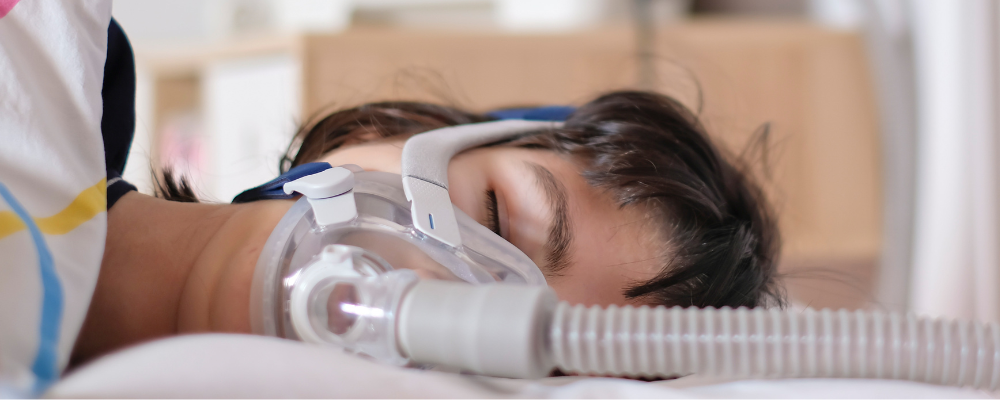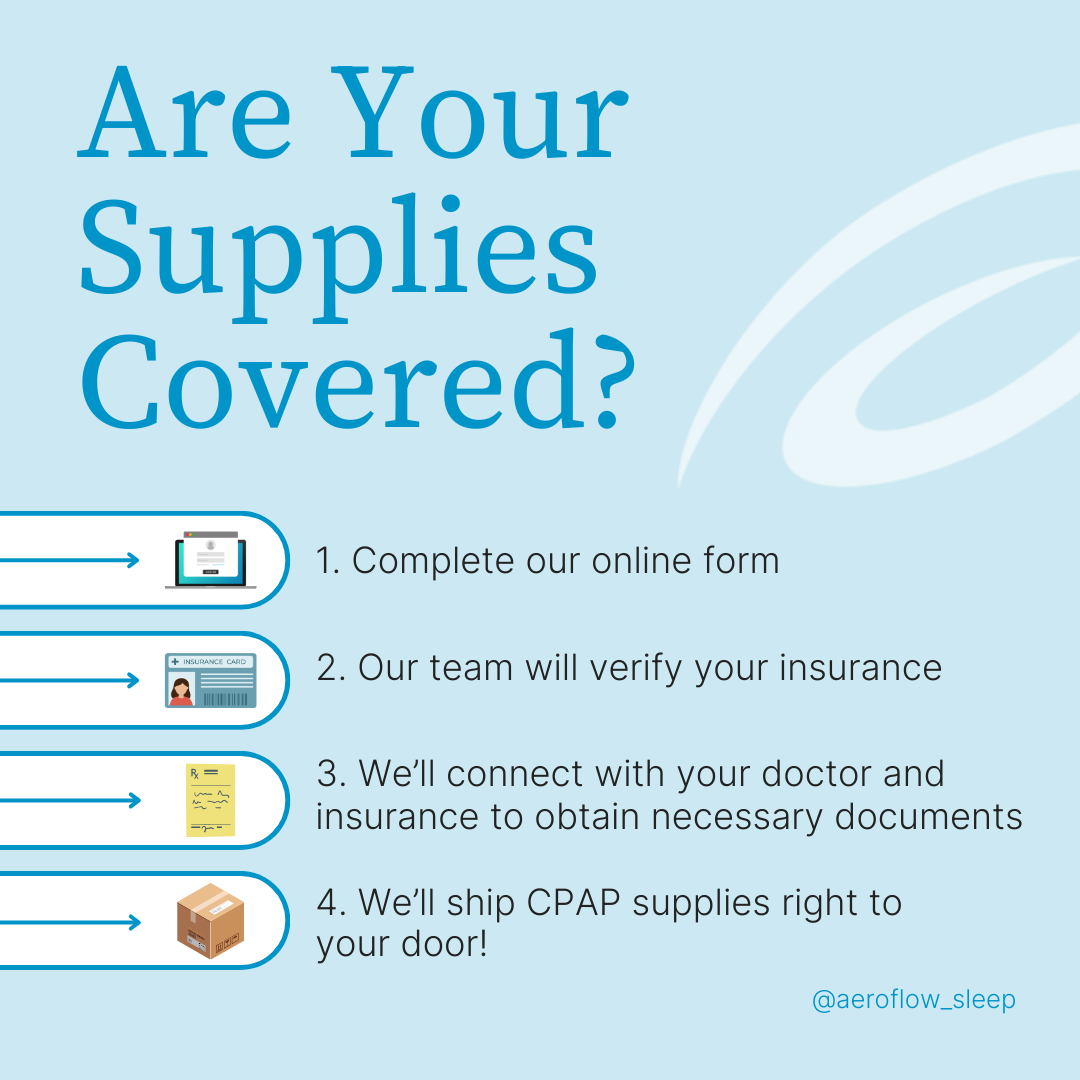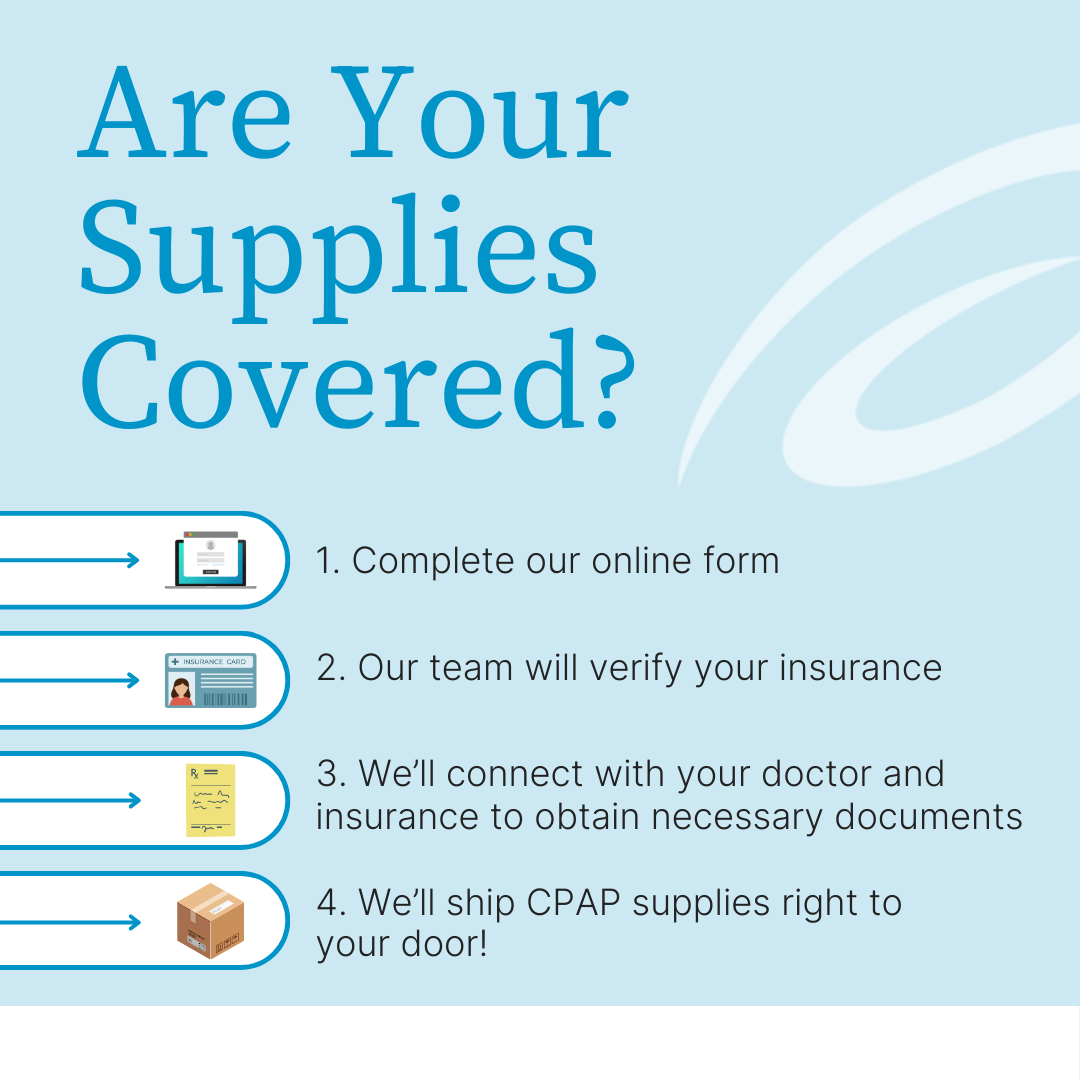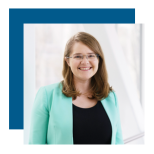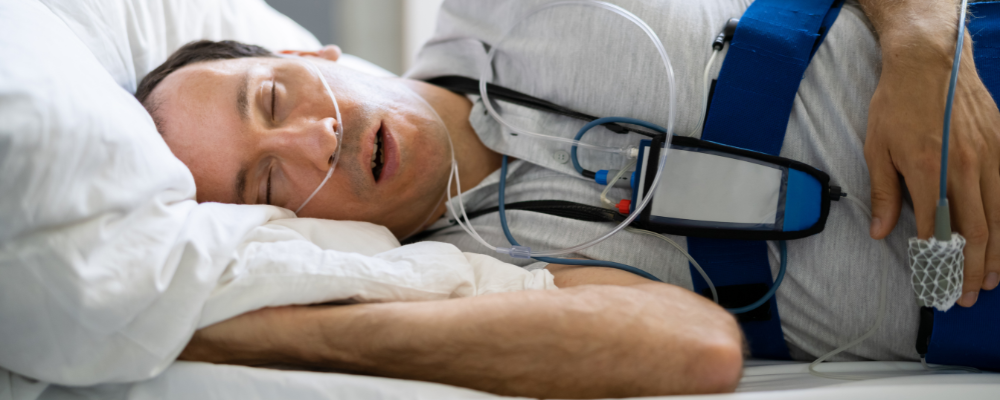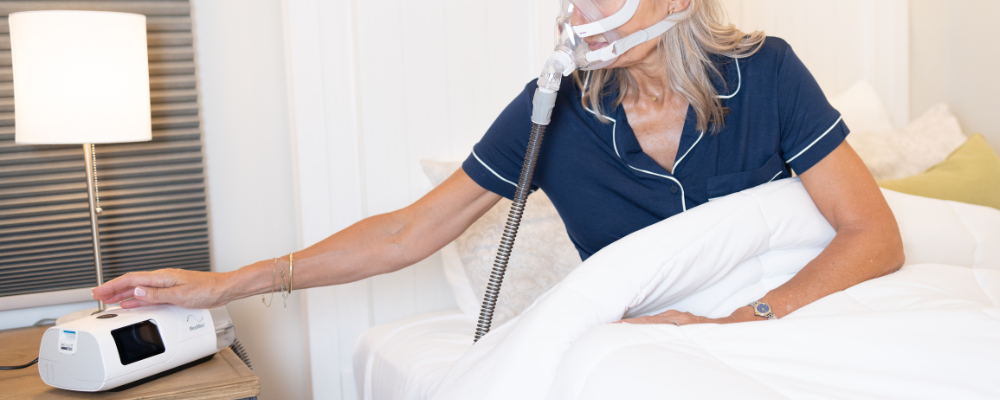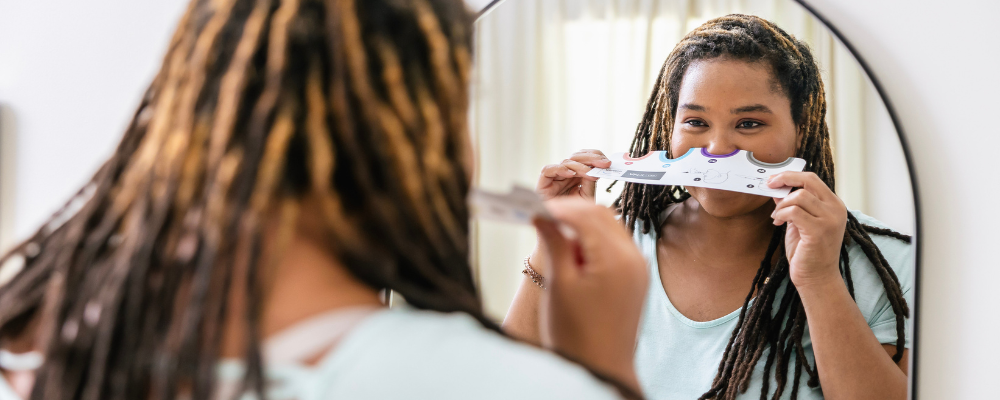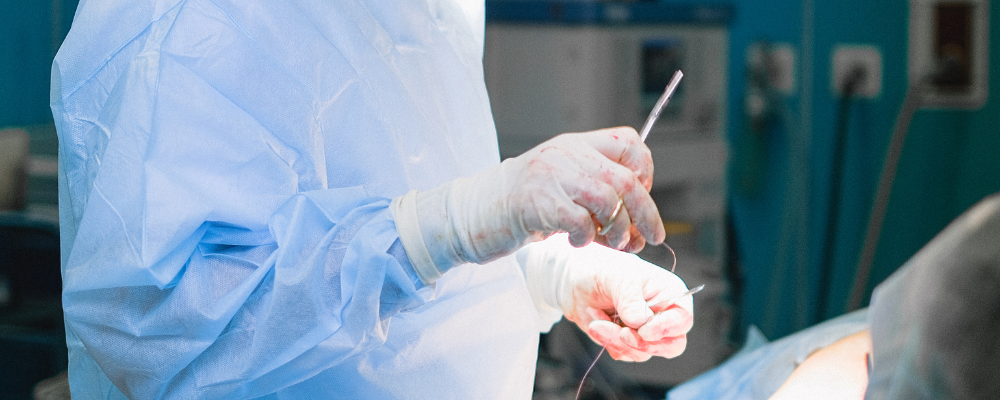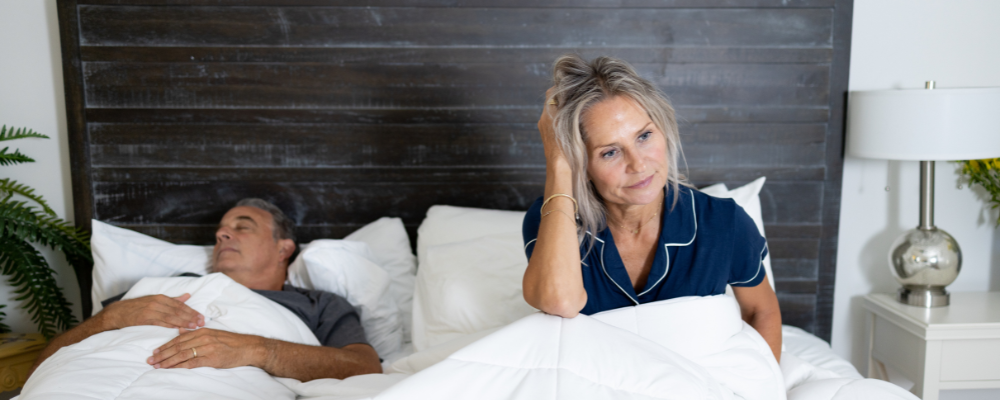Central Sleep Apnea vs Obstructive Sleep Apnea: Is The Difference That Big?
There are three types of sleep apnea, and each one should be taken seriously. After all, we’re talking about sleep-disordered breathing, which can greatly affect your quality of life. Is the difference between them really that big though? Our blogs address obstructive sleep apnea most often, because it is the most common. Today, with Aeroflow Sleep Advisor, Dr. Carleara Weiss’s expert insight, we’re going to talk about central sleep apnea and how it compares.
What Is Central Sleep Apnea?
Central sleep apnea (CSA) is a sleep disorder that’s similar to obstructive sleep apnea, however CSA is a central nervous issue. “With CSA,” Dr. Weiss explains, “the brain signals that naturally control the muscles responsible for respiration during sleep don’t fire properly, so you stop breathing for a few seconds. The stop in breathing simulates obstructive sleep apnea,” but the cause isn’t the same.
Obstructive sleep apnea (OSA) is caused by a literal upper airway obstruction or blockage. Things like large tonsils, a fatty neck, or even an overcrowded palette may be to blame for OSA, but your nervous system isn’t one of them.
The third form of sleep apnea is called complex sleep apnea, or mixed sleep apnea, and that’s when a person has both OSA and CSA at the same time. It is also the rarest type of sleep apnea.
How Rare Is Central Sleep Apnea?
According to the Sleep Foundation, CSA affects less than 1% of Americans over the age of 40 while OSA affects up to 70% of loud snorers alone. To make things worse, not everyone who has sleep apnea snores, although it is usually a sleep apnea symptom.
Sleep apnea symptoms include:
- Excessive daytime sleepiness
- Insomnia
- Mental health disorders
- Cognitive dysfunction
- Morning headaches
- Dry mouth or sore throat
- Awakening gasping or struggling to breathe
- Rapid weight gain or obesity
But we digress; recent research argues that central sleep apnea may be more common than previously thought, especially in sleep apnea patients with congestive heart failure. In fact, Jerome A. Dempsey of University of Madison - Wisconsin published, “Heart failure patients with left ventricular dysfunction [specifically…] are the most prevalent type of CSA patient and over one half of these patients show sleep-disordered breathing,” making congestive heart failure one of the main risk factors for central sleep apnea.
What Are The Main Risk Factors For Central Sleep Apnea?
Several risk factors for central sleep apnea exist, and the prevalence is frequently seen among patients with the following medical conditions:
- Cardiovascular disease, or heart disease
- Hypertension, or high blood pressure
- Diabetes, types 1 & 2
When a medical condition puts you at risk for another medical condition—like central sleep apnea and heart disease do, these are referred to as comorbidities. Anyone with comorbidities should seek medical advice for how best to treat both medical conditions together, especially if one may not go away without taking care of the other first. Not treating one or the other may also increase your risk for severe complications in both.
Furthermore, there are risk factors that are not tied to medical conditions but to one’s self; age, assigned sex at birth, and even prescribed drug interactions all add up and can become risk factors. Dr. Weiss advises, “[Being an] age above 60 and being male, although not a medical condition, can increase the risk of CSA as well as people who use opioids.”
Can Central Sleep Apnea Go Away On Its Own?
Central sleep apnea unfortunately cannot go away on its own, but there are multiple treatment options. Continuous positive airway pressure, or CPAP therapy, is the gold standard of sleep apnea treatment. It works by administering pressurized air through a CPAP machine to either your nose or mouth or sometimes both, depending upon which CPAP mask you prefer. Regardless, that pressurized air then pushes against the collapsing soft tissues and helps control your breathing.
To get a CPAP, you’ll first need to have a sleep study. A sleep study is an at-home or in-lab sleep test that diagnoses a sleep disorder, even ones that are not a type of sleep apnea; such as Cheyne-Stokes Breathing.
An aux monitor will be placed on your finger, tracking your heart rate and oxygen levels while you sleep. Should you experience any pauses in breathing that last more than 20 seconds, those will be counted and totaled at the end of each hour. They’re then placed on the Apnea-Hypopnea Index (AHI.) 5 or more apneas means you have sleep-disordered breathing and will most likely be prescribed a CPAP machine. CPAP therapy alternatives do exist, but they are not always recommended. Consult your sleep doctor about what’s right for you.
Is Central Sleep Apnea Treated Differently?
As you can see, central sleep apnea is not treated any differently than obstructive sleep apnea, in most cases. What is different is the air pressure a patient may need to achieve normal breathing patterns. CPAP pressure settings typically begin around 6 cm/H2O, but they can be set as high as 20 cm/H2O; cm/H2O being the measurement of water pressure needed to prevent your upper airway from collapsing.
CSA patients do present with a greater need for high pressure settings, so it is also possible that they may need to be treated with bilevel positive airway pressure, or BiPAP instead of a CPAP machine. BiPAP machines redistribute your airflow between two pressure settings, allowing a higher pressure to overtake the lower pressure as you inhale and exhale. Note, a few CSA patients may also need supplemental oxygen.
If you are unsure where to get a BiPAP or CPAP machine, look no further! Aeroflow Sleep has both devices readily available, and more importantly, we navigate the complexities of getting either covered by your insurance, so you don’t have to!
We’re in-network with most primary health insurance providers; including Aetna, Blue Cross & Blue Shield, Cigna, Humana, and United Healthcare. We also take a combination of secondary insurance plans and are accredited by both Medicare and Medicaid. All you have to do is see if you qualify by filling out this online form. It only takes a few minutes to complete, so what are you waiting for? Let’s get you some sleep medicine, so you can get your Obstructive Sleep Apnea or Central Sleep Apnea under control!
References
Wang J, Wang Y, Feng J, Chen BY, Cao J. Complex sleep apnea syndrome. Patient Prefer Adherence. 2013 Jul 3;7:633-41. doi: 10.2147/PPA.S46626. PMID: 23861580; PMCID: PMC3704546.
Newsome, Rob. “Central Sleep Apnea.” Edited by Kimberly Truong, Sleep Apnea, Sleep Foundation, 3 Nov. 2023, www.sleepfoundation.org/sleep-apnea/central-sleep-apnea.
Dempsey JA. Central sleep apnea: misunderstood and mistreated! F1000Res. 2019 Jun 28;8:F1000 Faculty Rev-981. doi: 10.12688/f1000research.18358.1. PMID: 31297185; PMCID: PMC6600863.


